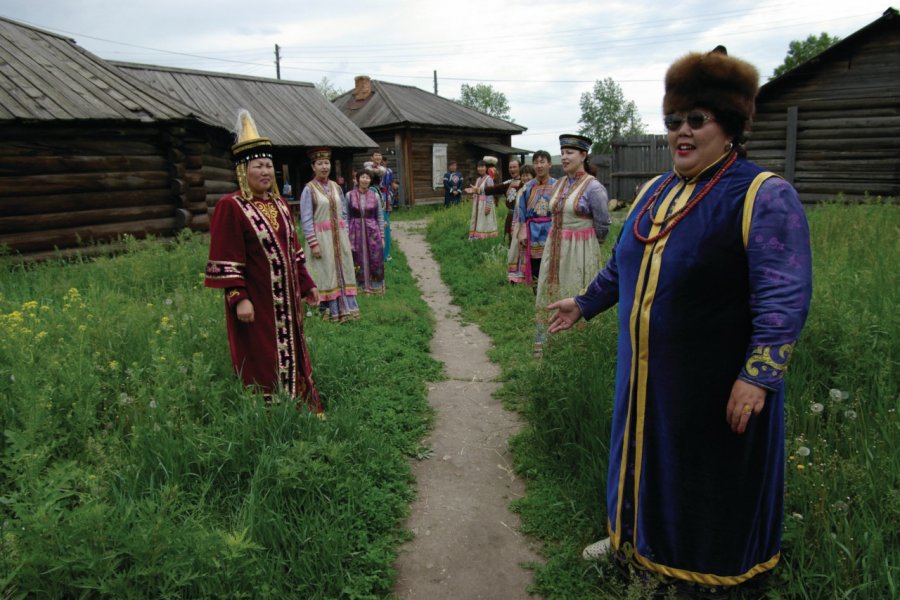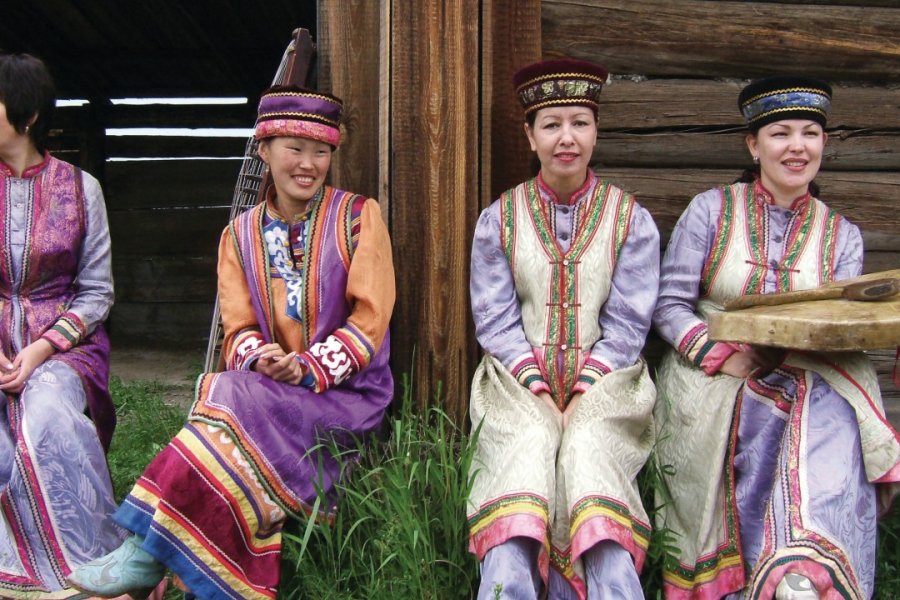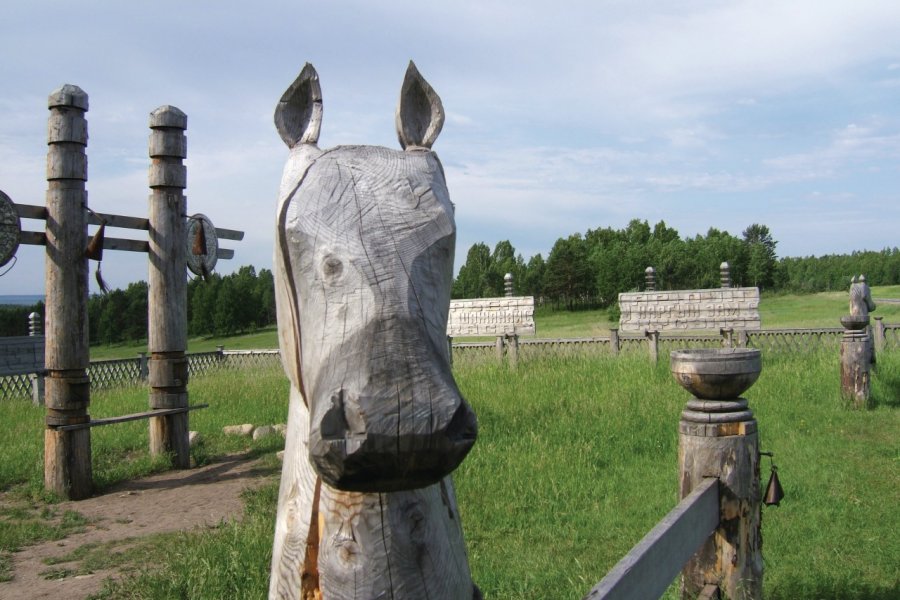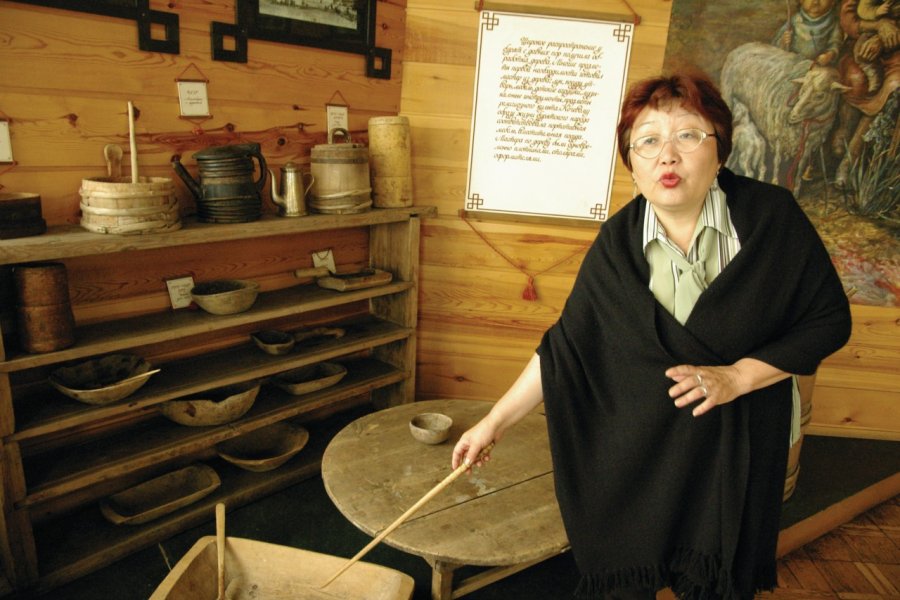Travel Guide Ust '-Ordinski (Усть-Ордынский)
Find an accommodation
Advertising
This part of Pribaïkalié is largely covered with fields and meadows, a result of human activity. We discovered here, near the Mankhaï Mountains, traces of man, in the form of rock sculptures dating back to 25 000 years. Vestiges of the Neolithic era (2 000-7 000 years) were also uncovered in the communes of Ikhirite-Boulagate and Ossa. In the th century of our era, the Turkish, Mongolian and Évenks tribes led a nomadic life. Some, however, such as the Kourikans, had a high-level culture and looked after livestock and farming. In the th century, their land was annexed to Genghis Khan's empire. After its defeat, the nomadic tribes, forming as many clans, lived at war against one another, and endured frequent Mongolian incursions. The arrival of the Russians in the th century ended the perpetual confrontation and marked the breakdown of these tribes with the Mongolian ethnic.The region's aboriginals are called the Western Bouriates, unlike the Eastern Bouriates, inhabitants of the southern regions of the lake. The West Bouriates permeated Russian influence and sédentarisèrent the first, abandoning traditional farming for agriculture, especially as their plains were quite fertile. They currently account for one third of the land cultivated in Pribaïkalié. Today, district farmers produce one third of milk, cereals and half of the wool in the entire Irkutsk region.The industry, non-existent before the Soviet era, operates in Noukouti one of the largest gypsum mines in the country as well as a iron mine in Zabitouï in the south. The Trans-Siberian region, which crosses the west, and the great work of the socialist era, attracted people everywhere. Of the current 122 000 inhabitants of okrug (Department type administrative subdivision), the Bouriates are 43 000 (36%), the Russians representing 50%. Already in the th century, links between Russians and Bouriates were quite strong; in mixed villages, unmarried Russians willingly married the girls of the Bouriates. This has given the region many beautiful Métis with high cheekbones and half-restricted eyes. The years of civil war and collectivisation were for the people bouriate not less harmful than for others. These same years, however, were accompanied by a cultural and economic leap for the bouriate population, of which 97%, before the revolution, did not know how to read and lived in yurts, with a wood fire in the centre, without even a shelter for its cattle in winter. In the fall, mass graves were growing to protect the animals from the cold during the winter months. A few still used this practice recently…In the museums of Kamenogorsk-Ordinski and Irkutsk, Reconstructions habitat reconstructions, their utensils and weapons of yesteryear can be seen. But, although the revolution has allowed the people to access education, industrialization and urbanization have altered former clan ties. Official language, Russian is spoken as a family. The fight against shamanism and its rituals has led to the loss of traditions. There is no old place of worship in this region. However, a datsan has just been built at the entrance to the town of Kamenogorsk-Ordinski. Shamanism has been better resisted over the centuries on the west coast than in the east of the lake, where it has gradually ceded place to Buddhism. A rite that does not risk losing, on the other hand, is the one that consists of offering a few drops of vodka to the earth and drinking the rest of the bottle! What the Bouriates and Russians - chamanistes, Buddhists or Christians - are doing with great pleasure.
Suggested addresses Ust '-Ordinski (Усть-Ордынский)
Weather at the moment
Advertising
Organize your trip with our partners Ust '-Ordinski (Усть-Ордынский)
Transportation
Book your plane tickets
Car Rental
Boat rental
Accommodation & stays
Find a hotel
Holiday rental
Find your campsite
Tailor-made trip
Immersion travel
Services / On site
Activities & visits
Find a doctor







